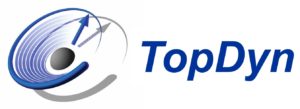

Seminar über die Physik der kondensierten Materie (SFB/TRR173 Spin+X und SFB/TR288 Kolloquium, TopDyn-Seminar)
Jan. 12, 2017 at
2 p.m.
in
MEDIEN-Raum, Staudinger Weg 7, 3. Stock, 03-431
Univ-Prof. Dr. Jure Demsar
Univ.-Prof. Dr. Hans-Joachim Elmers
Univ.-Prof. Dr. Mathias Kläui
Univ.-Prof. Dr. Thomas Palberg
Charge-density waves in 1D, 2D, and 3D: Novel insights from ultrafast dynamics
Kai Rossnagel (Universität Kiel)
Studying condensed-matter systems out of equilibrium, by impulsively pumping them at one time and stroboscopically probing them at femtosecond and picosecond time delays, is a fertile research field with many discoveries waiting to be made. This point of view can be motivated by the intriguing possibility to transiently drive systems into novel, hidden, or competing phases that cannot be accessed or cannot even exist in equilibrium. The more down-to-earth motivation, however, is the ability to temporally resolve dynamics in condensed matter at the fundamental time scales of electronic and lattice processes. This direct dynamical information can in principle be used to identify the dominant degrees of freedom of equilibrium phases, to determine the strength of the coupling between the different degrees of freedom, and thus to gain insight into the nature of complex phases and, possibly, the origin of phase transitions. A prime example is the chicken-and-egg question that inevitably arises when an electronic phase transition is accompanied by a lattice distortion.
In the first part of my talk, I will address this question for canonical quasi-one- and quasi-two-dimensional charge-density-wave (CDW) systems: the blue bronze Rb0.3MoO3 and the transition-metal dichalcogenides 1T-TiSe2, 1T-TaS2, and 1T-TaSe2. Using femtosecond time- and angle-resolved photoemission spectroscopy with extreme ultraviolet radiation, we can directly resolve and compare the momentum-dependent energy-gap and spectral weight dynamics on the first few 100 femtoseconds after impulsive near-infrared excitation. Surprisingly, different gap melting time scales and mechanisms are found for the different materials, suggesting different natures of the CDWs with dominant electronic or dominant lattice degrees of freedom, respectively. In the second part of the talk, I will complement the results on ultrafast electron dynamics in CDW systems by time-resolved x-ray diffraction results on three-dimensional Cr, where the focus is on ultrafast structural CDW dynamics. In the end, both types of time-resolved experiments provide a motivation for future combined ultrafast photoelectron spectroscopy and diffraction experiments at x-ray free-electron lasers with high repetition rates.